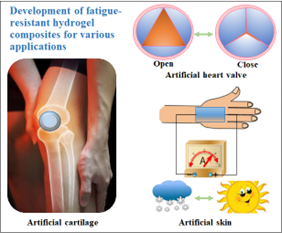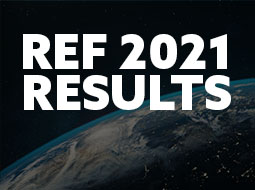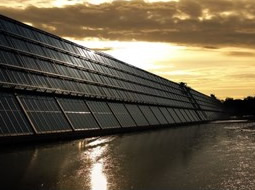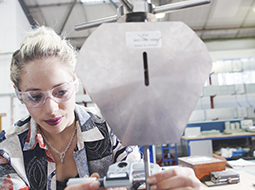-
Study
-
Quick Links
- Open Days & Events
- Real-World Learning
- Unlock Your Potential
- Tuition Fees, Funding & Scholarships
- Real World Learning
-
Undergraduate
- Application Guides
- UCAS Exhibitions
- Extended Degrees
- School & College Outreach
- Information for Parents
-
Postgraduate
- Application Guide
- Postgraduate Research Degrees
- Flexible Learning
- Change Direction
- Register your Interest
-
Student Life
- Students' Union
- The Hub - Student Blog
- Accommodation
- Northumbria Sport
- Support for Students
-
Learning Experience
- Real-World Learning
- Research-enriched learning
- Graduate Futures
- The Business Clinic
- Study Abroad
-
-
International
International
Northumbria’s global footprint touches every continent across the world, through our global partnerships across 17 institutions in 10 countries, to our 277,000 strong alumni community and 150 recruitment partners – we prepare our students for the challenges of tomorrow. Discover more about how to join Northumbria’s global family or our partnerships.
View our Global Footprint-
Quick Links
- Course Search
- Undergraduate Study
- Postgraduate Study
- Information for Parents
- London Campus
- Northumbria Pathway
- Cost of Living
- Sign up for Information
-
International Students
- Information for International Students
- Northumbria and your Country
- International Events
- Application Guide
- Entry Requirements and Education Country Agents
- Global Offices
- English Requirements
- English Language Centre
- International student support
- Cost of Living
-
International Fees and Funding
- International Undergraduate Fees
- International Undergraduate Funding
- International Masters Fees
- International Masters Funding
- International Postgraduate Research Fees
- International Postgraduate Research Funding
- Useful Financial Information
-
International Partners
- Agent and Representatives Network
- Global Partnerships
- Global Community
-
International Mobility
- Study Abroad
- Information for Incoming Exchange Students
-
-
Business
Business
The world is changing faster than ever before. The future is there to be won by organisations who find ways to turn today's possibilities into tomorrows competitive edge. In a connected world, collaboration can be the key to success.
More on our Business Services-
Business Quick Links
- Contact Us
- Business Events
- Research and Consultancy
- Education and Training
- Workforce Development Courses
- Join our mailing list
-
Education and Training
- Higher and Degree Apprenticeships
- Continuing Professional Development
- Apprenticeship Fees & Funding
- Apprenticeship FAQs
- How to Develop an Apprentice
- Apprenticeship Vacancies
- Enquire Now
-
Research and Consultancy
- Space
- Energy
- AI and Tech
- CHASE: Centre for Health and Social Equity
- NESST
-
-
Research
Research
Northumbria is a research-rich, business-focused, professional university with a global reputation for academic quality. We conduct ground-breaking research that is responsive to the science & technology, health & well being, economic and social and arts & cultural needs for the communities
Discover more about our Research-
Quick Links
- Research Peaks of Excellence
- Academic Departments
- Research Staff
- Postgraduate Research Studentships
- Research Events
-
Research at Northumbria
- Interdisciplinary Research Themes
- Research Impact
- REF
- Partners and Collaborators
-
Support for Researchers
- Research and Innovation Services Staff
- Researcher Development and Training
- Ethics, Integrity, and Trusted Research
- University Library
- Vice Chancellors Fellows
-
Research Degrees
- Postgraduate Research Overview
- Doctoral Training Partnerships and Centres
- Academic Departments
-
Research Culture
- Research Culture
- Research Culture Action Plan
- Concordats and Commitments
-
-
About Us
-
About Northumbria
- Our Strategy
- Our Staff
- Our Schools
- Place and Partnerships
- Leadership & Governance
- University Services
- Northumbria History
- Contact us
- Online Shop
-
-
Alumni
Alumni
Northumbria University is renowned for the calibre of its business-ready graduates. Our alumni network has over 253,000 graduates based in 178 countries worldwide in a range of sectors, our alumni are making a real impact on the world.
Our Alumni - Work For Us
Development of advanced fatigue-resistant hydrogel composites
 Hydrogels are 3D polymer networks
containing water. The main integral parts of tissues and organs in animals
and plants are all composed of hydrogels. Thus, recent years have witnessed
fast growth in developing various artificial hydrogels due to their promising
applications in bio-medical science and healthcare, e.g., artificial tissue,
artificial cartilage, and artificial heart valves. In most of these potential
applications, hydrogel components are subjected to cyclic mechanical
loadings, e.g., for an average person, the artificial cartilage must sustain
around 1 million cycles of stress with a peak around 4 ~ 9 MPa per year.
Thus, the artificial hydrogels must exhibit good mechanical properties.
Unfortunately, compared with their natural partners, artificial hydrogels
have much poorer mechanical properties, i.e., lower mechanical strength,
lower fracture toughness, and lower fatigue-resistance. By comparing natural
and artificial hydrogels, it is found that different from artificial
hydrogels which are homogeneous polymer networks, the natural ones are
usually inhomogeneous, containing biomineral particles, hard tissues, and
ordered/hierarchical structures. The supreme mechanical properties of natural
hydrogels are potentially related to their inhomogeneous structures.
Hydrogels are 3D polymer networks
containing water. The main integral parts of tissues and organs in animals
and plants are all composed of hydrogels. Thus, recent years have witnessed
fast growth in developing various artificial hydrogels due to their promising
applications in bio-medical science and healthcare, e.g., artificial tissue,
artificial cartilage, and artificial heart valves. In most of these potential
applications, hydrogel components are subjected to cyclic mechanical
loadings, e.g., for an average person, the artificial cartilage must sustain
around 1 million cycles of stress with a peak around 4 ~ 9 MPa per year.
Thus, the artificial hydrogels must exhibit good mechanical properties.
Unfortunately, compared with their natural partners, artificial hydrogels
have much poorer mechanical properties, i.e., lower mechanical strength,
lower fracture toughness, and lower fatigue-resistance. By comparing natural
and artificial hydrogels, it is found that different from artificial
hydrogels which are homogeneous polymer networks, the natural ones are
usually inhomogeneous, containing biomineral particles, hard tissues, and
ordered/hierarchical structures. The supreme mechanical properties of natural
hydrogels are potentially related to their inhomogeneous structures.
Inspired by the heterogeneous natural hydrogels, this project aims to develop artificial hydrogel composites with high mechanical strength, high fracture toughness and high fatigue-resistance. Biocompatible hydrogel composites containing reinforcing particles/fibres and various inner structures/lattices will be synthesised. Besides the mechanical testing at macro-scale, microscopic observations of the deformation of the embedded particles/fibres and inner structures/lattices will also be conducted by advanced optical techniques such as polarized microscope, fluorescence imaging and mechanochemical technique. Theoretical modelling will also be performed. Model simulation results will be compared with experimental data to study the structure-property relation and reveal the physical mechanisms for the improved mechanical properties of hydrogel composites. The whole work packages will include gel composite fabrication, mechanical testing, optical characterisation, and theoretical modelling.
Faculty: Engineering and Environment
Department: Mechanical and Construction Engineering
Principal Supervisor: Dr. Sherry Chen
Recent publications by supervisors relevant to this project
- “A structural gel composite enabled robust underwater mechanosensing strategy with high sensitivity”, Advanced Functional Materials, 2201396 (2022).
- “Spatially and reversibly actuating soft gel structure by harnessing multimode elastic instabilities”, ACS Applied Materials & Interfaces 13 (30), 36361–36369 (2021).
- “Controlled cooperative wetting enabled heterogeneous structured 3D morphing transducers”, Advanced Materials Interfaces 8 (2), 2001211 (2021).
- “A flexible topo-optical sensing technology with ultra-high contrast”, Nature Communications 11 (1), 1–7 (2020).
Eligibility and How to Apply
Qualification
Applications are invited from exceptional candidates who have a good first or upper second class degree (or equivalent) in engineering or materials science. Students who are not UK/EU residents are eligible to apply, provided they hold the relevant academic qualifications, together with an IELTS score of at least 6.5. This project is well suited to motivated and hard-working candidates with a keen interest in design, materials and manufacturing. The applicant should have excellent communication skills including proven ability to write in English.
For more information and informal enquiries please contact: Dr Sherry Chen
Further details of the application process and entry requirements can be found here: https://www.northumbria.ac.uk/research/postgraduate-research-degrees/how-to-apply
Deadline for applications: 1st December for March (following year) start; 1st July for October (same year) start.
Start Dates: March and October of each year
Researchers within our Future Engineering multidisciplinary research theme are exploring what technologies will be heating our homes and driving our cars in 20 years time.
Get an insight into life at Northumbria with videos and 360 panoramas of the Department of Mechanical and Construction Engineering.




